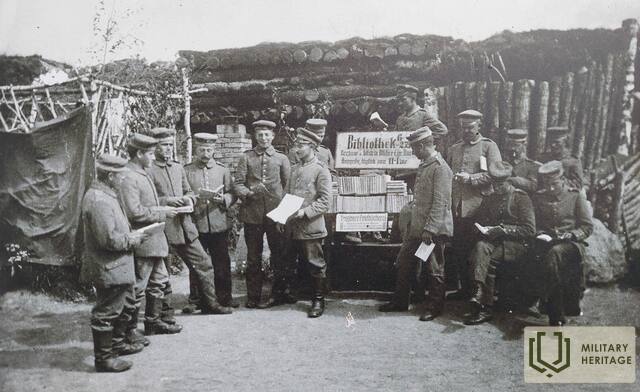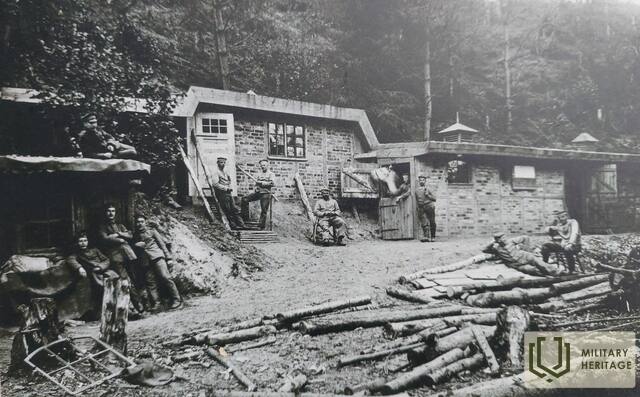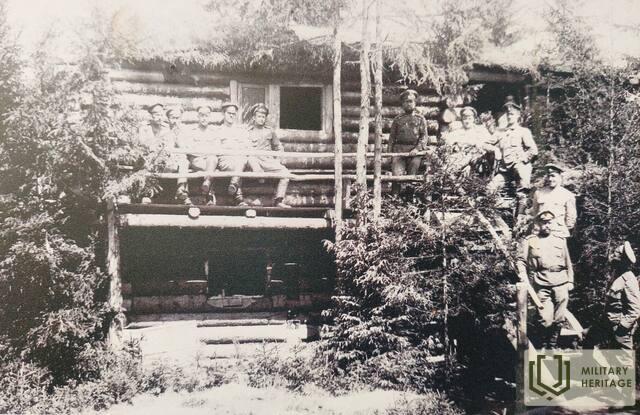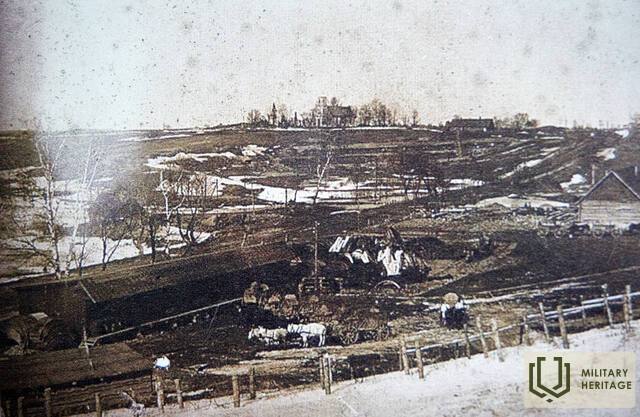About the underground town in Egypt and Sodiski
In 1915, when German troops entered the territory of Latvia, the first phase of the war was characterized by a war of maneuvers. In the fall of 1915, when the front stabilized at the natural obstacle Daugava, a war of positions began, which lasted for two years - until the fall of 1917, when the German army, taking advantage of the changes of the Revolution in the Russian Empire and the demoralization and collapse of the Russian army, went on the offensive.
Any troop unit that does not attack begins to entrench and fortify. It is determined by both military doctrine and tactical considerations and the need to survive. Trenches and positions protect soldiers from the enemy's direct and indirect fire (artillery), as well as from adverse weather conditions.
Initially, the positions were built from wooden logs, later - in 1916. beginning - concreted positions were created. In the German army, units were rarely changed between sectors of the front, so German soldiers approached the construction of positions more carefully - they knew that they were building positions for themselves and they would have to live there as well. In the Russian army, units were moved between sectors regularly, and concrete positions were not created on the Russian side.
The first line of the Russian army passed through Medumi. The first line of German defense was 400 meters away, on the other side of Lake Medumu. Further south, in Sodiški (nowadays approximately the home of Upmalai), was the headquarters of the artillery regiment. There was an observation bunker near the headquarters. There was a whole row of bunkers in Sodiški, but they were made of timber, so they have not been preserved. Only their locations on the terrain are visible.
An underground town had been established in Egypt, or Wilkumiest, which was on the German second line. In Vilkumiest from 1836. there was a post office. Vilkumiest in 1915. the retreating Russian army destroyed it so that the Germans had nowhere to live. Two more interesting historical facts related to Vilkumiesta - here from 1873. until 1874 Jānis Rainis studied at Oskar Svenson's boarding school. The school was established by Baron Ettingen, who took care of the development of the parish. A story has been preserved that his friend Otto von Bismarck, the future chancellor of Germany, visited Ettingen and spent 10 days in Vilkumiest. Later, Ettingen also sent Bismarck strong drinks from his own Turkey distillery. Although such episodes are not described in Bismarck's biography, the story is entirely plausible, taking into account Bismarck's close ties with the Baltic nobility and the fact that Bismarck was the Prussian envoy to the Russian Empire from 1859 to 1862, operating in Petersburg. The port city was located on the route St. Petersburg-Warsaw, which was the fastest way to get to Germany.
The construction of the rear positions can be read in the memoirs of pioneer first lieutenant Hans Tröbst, who served in the 78th reserve pioneer company of the 147th infantry regiment of the 77th reserve division. This company was the only one for the entire division, so the infantry units themselves were widely involved in the work, as well as the 42nd POW Battalion, which quickly refused to work within the reach of Russian army artillery based on international agreements. From the memories of H. Trobst: "The battalion commander decided to create a camp as a long, one-sided "street" on the selected slope. Since the habitats must also be able to defend themselves, he also decides where the trenches will have to be dug. Each company received its station and the work began! Easy to say and easy to hear, though. But what difficulties it is to break up the earth full of roots with these "tea shovels" - the shovels of infantry sappers. Daggers, pocketknives, shovels and axes were derooted and stumped. From the far back, carts with building materials dragged like ants to each ornament. Every piece of wood proved useful. Rota was very lucky if she managed to find a birch grove. No matter how big such a forest is, it disappeared after 2-3 days. It was difficult to imagine a more suitable construction material than birch. They were easy to transport, it was as docile as a lamb - many things could and were made of it. Crosses for graves, posts for dams, grates for trenches, telephone poles, decorations for living spaces, bridge railings, chairs and beds were made from birch. Rotas worked like bees to prepare shelters for the next 6 months, or at least until spring.”
Whenever possible, in the second lines and artillery positions, soldiers, especially officers, lived in the abandoned houses of local residents. H. Trobst's memoirs describe the following living conditions: "The furniture was quite good - the farmer, the previous owner of the furniture, obviously lived well enough. The room had a large wall mirror, a sewing machine and European-style wardrobes, chairs and tables. The walls were covered with wallpaper and decorated with paintings and dried flowers. The room was divided by walls up to the ceiling and proper doors were installed everywhere. In the center of the living room, between two doors, there was a large open fireplace that I had built myself, adapted to burn oak wood. The great oak wood piled up at the back of the house gave us great fuel.”
Since there were not enough pioneers in the division and the infantry also carried out construction work, First Lieutenant Trobst prepared methodological material for concreting works "Concreting Guide (Anleitung zum Betonieren)" and each company received a description with drawings.
Since there was no possibility to cast concrete bunkers on the front lines, it was decided to produce concrete slabs, or more precisely, blocks, from which structures could be created later. For this purpose, a concrete slab factory was established in Staro Dvorišče. The blocks had to be of such weight that one or two soldiers could lift them - 15 centimeters thick and 60x60 centimeters in size. Thin iron rods were placed inside them as reinforcement fasteners. The mold was then filled with a mixture of cement and sand. The slabs turned out to be so accurate that they could be used to pave the streets. The pioneers were so proud of their product that they left a mark on each plate: “R. Pi.K. 78”, which translates to “Reserve Pionier-Kompanie 78”.








